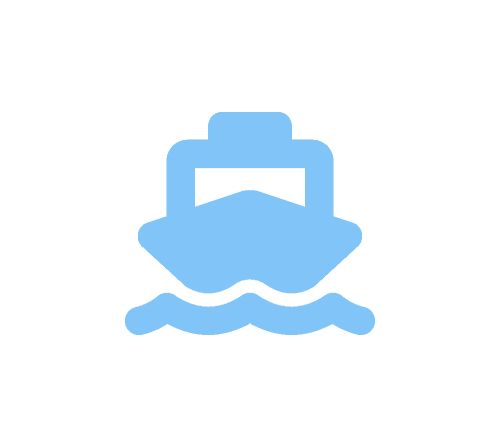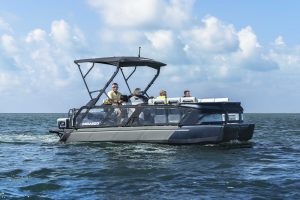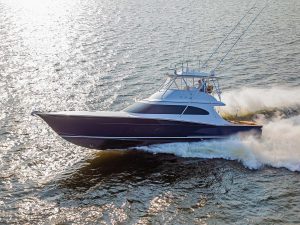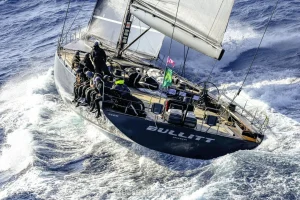Big Sarasota Pass Inlet
Weather
Big Pass Inlet, a natural waterway on the west coast of Florida, connects the Gulf of Mexico to Sarasota Bay. This inlet is known for its deep waters as well as its outer confluence being very shoal and subject to constant changes. The picturesque environment creates a perfect setting for boaters, fishermen, and nature enthusiasts. However, navigating through the ever-changing pass requires caution and local knowledge to ensure a safe passage.
For those who are unfamiliar with the region, Sarasota Bay is located south of Bradenton and north of Venice Inlet. The nearby New Pass Inlet offers an alternative route to the bay, and it features a four to seven-foot-deep channel that is considered fairly reliable and safe in most conditions. It is important to be aware of the water depths more...
Big Pass Inlet Sarasota: Florida's Hidden Gem Uncovered
Big Pass Inlet, a natural waterway on the west coast of Florida, connects the Gulf of Mexico to Sarasota Bay. This inlet is known for its deep waters as well as its outer confluence being very shoal and subject to constant changes. The picturesque environment creates a perfect setting for boaters, fishermen, and nature enthusiasts. However, navigating through the ever-changing pass requires caution and local knowledge to ensure a safe passage.
For those who are unfamiliar with the region, Sarasota Bay is located south of Bradenton and north of Venice Inlet. The nearby New Pass Inlet offers an alternative route to the bay, and it features a four to seven-foot-deep channel that is considered fairly reliable and safe in most conditions. It is important to be aware of the water depths and shifting sands as these factors may change daily due to weather conditions.
The surrounding areas of both Big Pass Inlet and the neighboring New Pass Inlet offer a myriad of recreational opportunities for visitors and locals alike. Make sure to explore the adjacent Sarasota Bay Watershed and the Gulf of Mexico Watershed, each providing unique ecosystems, habitats, and water quality standards. The picturesque landscapes and abundant aquatic life make this region a must-visit spot for any Floridian traveler.
Overview of Big Pass Inlet
Location
Big Pass Inlet, also known as Big Sarasota Pass, is located along the west coast of Florida, connecting the Gulf of Mexico to Sarasota Bay. The inlet separates Lido Key to the south and Longboat Key to the north, both of which are barrier islands near the city of Sarasota.
Current Status
Big Pass Inlet is known for its deep and wide passage past Sarasota Point, but the outer confluence with the Gulf of Mexico can be quite shallow and is subject to constant changes due to shifting sand bars and currents (source). Despite these navigational challenges, Big Pass has never had to be dredged to maintain tidal flow as it remains an essential access point for boaters in the region (source).
New Pass, another inlet close to Big Pass, helps carry a large tidal prism alongside Big Sarasota Pass on the west-central coastline of Florida (source). Both inlets are part of Florida's microtidal, low-wave energy coast, which is home to 29 barrier islands and 30 tidal inlets. This coast is known for having the most diverse morphologies of any barrier system in the world.
Big Pass Inlet, like much of the southwest Florida coastline, is occasionally affected by "red tide," a phenomenon caused by high concentrations of the toxic alga Karenia brevis (source). Overall, Big Pass Inlet plays a crucial role in local waterways, ecology and recreation in the Sarasota area.
Navigating Big Pass Inlet
Aids to Navigation
Big Pass Inlet, located in Sarasota, Florida, can be approached using NOAA Chart 11425. The inner channel is marked past Sarasota Point, but the outer entrance is unmarked. If there are any aids to navigation in place at any time, they are frequently moved and uncharted.
Shoaling and Depths
It is important for boaters to remain cautious while navigating Big Pass Inlet due to the presence of shoaling and shifting sands. To assist with navigation, there are updates on depths and shoaling available at the Sarasota Yacht Club's website, which provides waypoints and control depth information. As of May 12, 2023, the control depth was 6 feet, with a tide of +.3ft and seas of 1-3ft.
Position: N2718.162' W8233.822' with 19.8ft
Boaters should also be aware that Big Pass Inlet is situated between Venice Inlet and Longboat Pass, with New Pass Inlet acting as an alternative access point to Sarasota Bay. The channel in New Pass Inlet is generally 4-7 feet deep and fairly reliable in most conditions.
Tides and Currents
Boaters should also take tides and currents into account while navigating Big Pass Inlet. Tides can have a significant impact on the depth of the channel, and currents can influence the position of shoals and buoys. The Venice Inlet, Longboat Pass, and Gulf Intracoastal Waterway also play a role in these conditions.
The U.S. Coast Guard routinely updates channel markers and buoy positions to reflect current conditions, but boaters should still remain vigilant and monitor the situation. In addition, boaters should consult local knowledge and current charts to ensure a safe passage through the inlet.
Local Knowledge and Resources
Marinas and Boating Facilities
Big Pass Inlet in Sarasota, Florida is well-connected to a network of marinas and boating facilities, providing essential amenities and services to boaters navigating the surrounding areas like Bradenton, Fort Myers Beach, Cape Coral, and Sanibel Island. Local knowledge is vital for safe and reliable navigation in the region.
The inlet's proximity to the Intracoastal Waterway (ICW) allows boaters to easily access facilities on the ICW, which runs through St. Petersburg and leads towards the Okeechobee Waterway. In addition, the New Pass Bascule Bridge serves as an important link for marine traffic in the area.
Relevant Websites and Communication Channels
To ensure accurate and up-to-date information, boaters should refer to Local Notices to Mariners, provided by the USCG Aux Sarasota Waterways website. This resource includes useful charts and maps of the Sarasota waterway, along with important announcements regarding the local marine environment.
Another helpful source of information is the Sarasota.WaterAtlas.org website, which focuses on Big Pass and provides additional insights regarding environmental conditions such as red tide.
Boaters in the region should also be familiar with the appropriate communication channels for marine traffic, such as VHF radio. Typically, VHF channel 16 is used for emergency and safety purposes, while channels 9, 13, and 22 are designated for navigational and bridge-to-bridge communications.
For information on safe navigation through the passes such as Big Sarasota Pass, Redfish Pass, Stump Pass, and Blind Pass among others, the West Coast Inland Navigation District (WCIND) website provides valuable insights and resources.
San Carlos Bay and Morse (A) Light
The Big Pass Inlet area is indirectly connected to the San Carlos Bay region, located closer to Fort Myers Beach. The Morse (A) Light serves as a navigational aid for boaters in this region, ensuring safety on the water. It is essential for sailors to be aware of the controlling depth and the accuracy of their navigation charts, providing vital local knowledge for safe and efficient travel through Florida's waterways.
Frequently Asked Questions
What is the depth of Big Pass Inlet?
The depth of Big Pass Inlet varies, but it is usually deep and fairly wide past Sarasota Point. However, its outer confluence with the Gulf of Mexico is very shoal and subject to constant changes, which could affect navigability for some vessels. More details about Big Sarasota Pass Inlet.
Where can I find Big Pass Sandbar?
The Big Pass Sandbar is located in the outer confluence of Big Pass Inlet with the Gulf of Mexico. Due to swift currents and constantly shifting sand, it is advisable to be cautious when navigating around the sandbar.
How to navigate Sarasota Bay?
When entering Sarasota Bay from the Gulf of Mexico, you could use New Pass Inlet or Big Pass Inlet. New Pass Inlet has a four- to seven-foot-deep channel that is constantly shifting but is fairly reliable and safe in most conditions. More information about New Pass Inlet.
What are the key locations around New Pass Inlet?
Some of the key locations around New Pass Inlet include Sarasota, Bradenton, and Venice Inlet. Sarasota is located to the south, while Bradenton is to the north. Venice Inlet is 17 miles south of New Pass Inlet.
How does Sarasota Yacht Club relate to Big Pass Inlet?
The Sarasota Yacht Club is easily accessible for boaters who navigate through Big Pass Inlet. Here are up-to-date waypoints to safely navigate Big Pass Inlet, as provided by the Sarasota Yacht Club.
What are some alternatives to Big Pass Inlet for boating in Sarasota?
Aside from Big Pass Inlet, another option for boating in Sarasota is New Pass Inlet, which connects the Gulf of Mexico with Sarasota Bay. It is a safe option for most boaters, and provides a good alternative for entering Sarasota Bay, especially during periods when Big Pass Inlet might be affected by shoaling or other navigational challenges.








